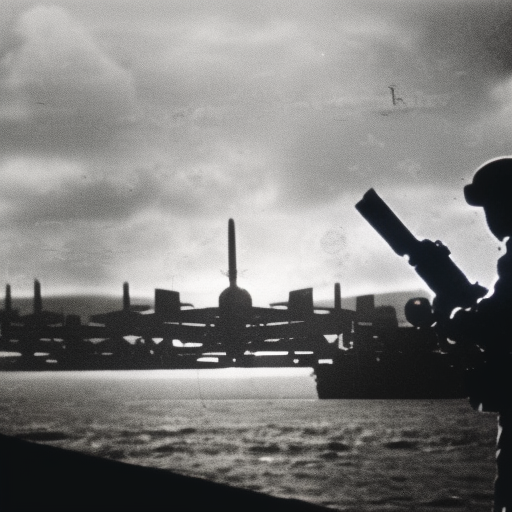Summary:
Operation Overlord, also known as the D-Day invasion, was a massive Allied military operation during World War II. It took place on June 6, 1944, and marked the beginning of the end for Nazi Germany’s control over Europe. The operation involved the simultaneous landing of troops from the United States, Britain, and Canada on the beaches of Normandy, France. Despite facing heavy resistance, the Allies successfully established a foothold and began their push towards liberating Western Europe from German occupation.
Planning and Preparation:
The planning for Operation Overlord began in 1943, with General Dwight D. Eisenhower appointed as the Supreme Commander of the Allied Expeditionary Force. The operation involved meticulous planning, including the selection of suitable landing sites, codenamed Utah, Omaha, Gold, Juno, and Sword. Extensive intelligence gathering and deception tactics were employed to mislead the Germans about the actual location and timing of the invasion.
The Invasion:
On the morning of June 6, 1944, thousands of Allied troops, supported by a massive naval and air force, launched the invasion. The troops faced formidable obstacles, including heavily fortified German positions, mines, and obstacles on the beaches. The American forces faced the toughest resistance on Omaha Beach, where they suffered heavy casualties. However, through sheer determination and bravery, they managed to overcome the German defenses and secure the beachhead.
Establishing a Foothold:
Once the initial beachhead was secured, the Allies began to expand their presence inland. They faced fierce German counterattacks, but with the support of reinforcements and air superiority, they were able to hold their ground. The British and Canadian forces made significant progress on their respective beaches, capturing key objectives and pushing inland.
Breakout and Liberation:
In the days following the initial landing, the Allies continued to push inland, gradually expanding their foothold. The breakout from the Normandy beachhead came on July 25, 1944, with Operation Cobra. This offensive allowed the Allies to break through the German lines and begin a rapid advance across France. By the end of August, Paris was liberated, and the Allies had effectively pushed the Germans out of France.
Significance and Legacy:
Operation Overlord was a turning point in World War II. The successful invasion of Normandy marked the beginning of the end for Nazi Germany. It opened up a second front in Europe, diverting German resources and forcing them to fight on multiple fronts. The operation demonstrated the effectiveness of combined arms warfare, with the coordination of land, sea, and air forces. It also showcased the bravery and determination of the Allied troops, who faced tremendous odds and achieved a decisive victory.
Conclusion:
Operation Overlord, or the D-Day invasion, was a pivotal moment in World War II. The successful landing and establishment of a foothold in Normandy allowed the Allies to begin the liberation of Western Europe from German occupation. The operation required meticulous planning, extensive preparation, and the courage of thousands of Allied troops. It demonstrated the effectiveness of combined arms warfare and marked a significant turning point in the war. Operation Overlord remains one of the most significant military operations in history, symbolizing the triumph of democracy over tyranny.












